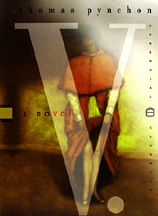John Updike’s Rabbit, Run and Thomas Pynchon’s V. were published in 1960 and 1963 respectively. I read them more or less back to back in the mid seventies. Rabbit is what people generally mean by “realistic,” providing an overview of a young man’s middle-class existence (his ageing is chronicled in three subsequent novels). Updike understood the ways, habits, and thought processes of the American middle class as perceptively, I believe, as is possible. Pynchon in V. was not much interested in the psychology of his characters, who tend to be socially disconnected. The novel is a mystery without a solution, a contemplation of complexity and disintegration in their own right. It progresses by geographic and chronological lurches. My family was financially middle class; but, due to the nature of my father’s work, we lived in a world much more like Pynchon’s than Updike’s. And this is why V. feels, to me, more like reality than does Rabbit and why the parallel universe sketched out by this movie list is so gothic/noir, emphasizing, for example, Huston more than Ozu. "Verisimilitude" is the word that applies here. It is "the quality of appearing to be real or true" [Webster's II]. In fiction a lot of artificial means are used to achieve this effect. To me - and I realize this will not be the case with most people - while Rabbit, Run does look like real life, it's V. that feels like real life. Or, at any rate, life as I have come to understand it. |

